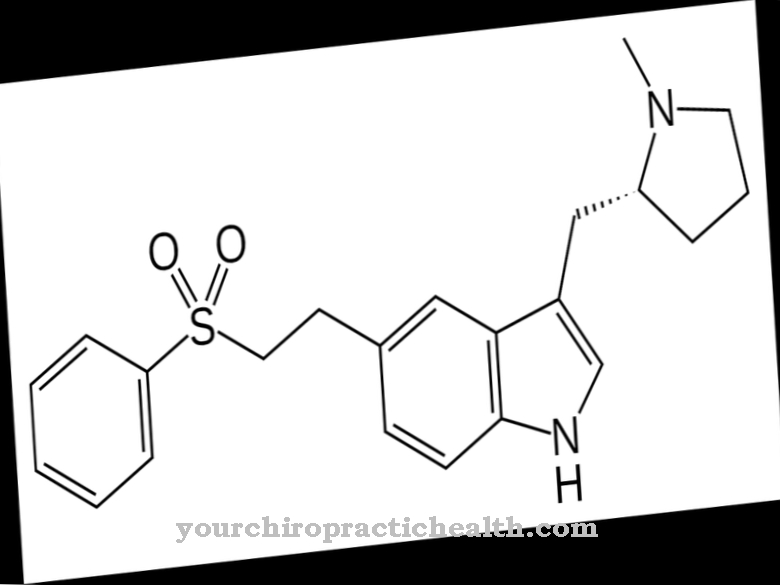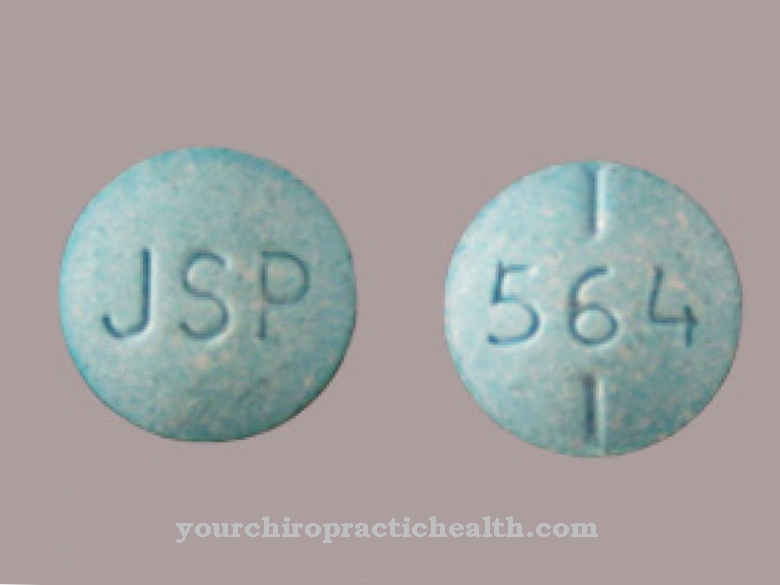Lidocaine is a drug from the class of local anesthetics that also acts as an antiarrhythmic. It belongs to the group of sodium channel blockers.
What is lidocaine?

The drug lidocaine was the first amino-amide local anesthetic. It was synthesized in 1943 by the Swedish chemists Bengt Lundqvist and Nils Löfgren. They sold their patent rights to the pharmaceutical company Astra AB.
Lidocaine is based on 2,6-xylidine. Lidocaine is produced from it in several stages of synthesis. The medicinal substance is available as a monopreparation or as a combination preparation in the form of gels, pastes, ointments, suppositories and injection solutions. Solutions for injection can be 0.25% or 5%.
Lidocaine is a local anesthetic and belongs to the class of sodium channel blockers. However, it is used not only as a local anesthetic, but also as an antiarrhythmic in medicine. Lidocaine works very quickly. It is metabolized in what is known as the cytochrome 450 system of the liver. The bioavailability is very good. Less than 10 percent of the original dose is excreted in the urine.
Pharmacological effect
Lidocaine is a sodium channel blocker. The drug blocks the voltage-dependent channels for sodium. These are located in the cell membranes of nerve cells. When a nerve cell is excited, sodium flows into the cells. An action potential is created and the excitation is passed on through depolarization processes from one nerve cell to the next or from one nerve cell to the target cell.
When the sensitive receptors of the skin perceive sensations such as pressure, pain, heat or cold, they pass these sensations on to the brain. This requires the conduction of excitation and thus the opening of the sodium channels in the cell membranes. Lidocaine blocks the sodium channels so that sodium cannot flow into the cells. The creation of an action potential is made more difficult, the stimulus is not passed on.
Lidocaine only has a local effect. Only the nerve cells that are located at the application site of the drug are affected. Thin nerve fibers are blocked faster in their transmission function than thick nerve fibers. After the application, the sensation of pain is initially limited. Subsequently, temperatures are no longer perceived. Then the touch and pressure perceptions worsen. Finally, the efferents fail. Efferents are nerve fibers that run from the central nervous system to the muscles. If the efferents fail, the motor skills in the affected area also fail.
Medical application & use
The main area of application for lidocaine is regional anesthesia. Local anesthesia eliminates the sensation of pain in a limited area of the body. The advantage over general anesthesia is that lung and brain function, metabolism and the acid-base balance are hardly affected.
Lidocaine is often used as a local anesthetic in dental and medical treatment. It is used for surface anesthesia, conduction anesthesia and infiltration anesthesia. In infiltration anesthesia, lidocaine is injected into the tissue to numb a small area. This may be necessary, for example, when sewing a laceration or with similar small interventions. Alternatively, lidocaine can be injected near a nerve. This numbs the nerve supply area. This process is also known as conduction anesthesia. After a contact time of one to three minutes, the local anesthetic lasts for one to three hours.
Lidocaine is also well absorbed through the mucous membranes. The active ingredient is therefore used for surface anesthesia in the form of sprays or ointments. Surface anesthesia guarantees freedom from pain, for example when treating hemorrhoids or during endoscopies.
Lidocaine is also available in the form of so-called delay creams or delay sprays. With the foreskin pulled back, these are applied thinly to the glans of the penis to suppress premature ejaculation. Lidocaine is also used as an active ingredient in teething aids as a local anesthetic.
The second major area of application of the drug is cardiac arrhythmias. Lidocaine slows down the spread of excitation in the heart's conduction system. The drug thus has a stabilizing effect on the heart rhythm and suppresses cardiac arrhythmias that originate in the heart chambers. Thus, lidocaine is mainly used to treat tachycardiac arrhythmias. Lidocaine used to be used very frequently as an emergency medication. However, its use has now declined because lidocaine not only prevents cardiac arrhythmias, but can also cause them in individual cases.
Lidocaine, as an antiarrhythmic, must be administered intravenously. Indications for the intravenous administration of lidocaine are cardiac arrhythmias of any origin. This also includes cardiac arrhythmias caused by poisoning with antidepressants or cardiac glycosides. Before interventions that can irritate the heart muscle, lidocaine can be given preventively. It reduces the risk of ventricular arrhythmias.
You can find your medication here
➔ Medicines for painRisks & side effects
Side effects tend to occur rarely with low doses of lidocaine. If the dosage is too high, cardiac and systemic adverse effects can occur. These include symptoms such as drowsiness, restlessness, cramps, and negative inotropy of the heart. With negative inotropy, the heart's force of contraction is reduced. In individual cases, it can also lead to a drop in blood pressure or allergic reactions. Very rarely, patients fall into a coma after high doses of lidocaine.



























